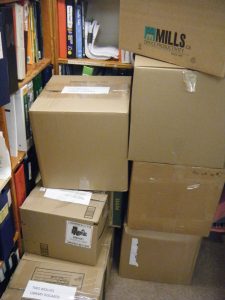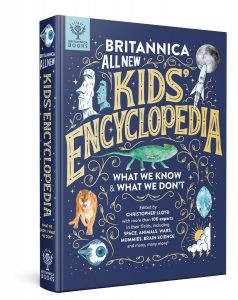Introduction
Reference sections in Library Learning Commons are an entry point of library users to the full breadth of information available in the space. Reference materials can become outdated relatively quickly however, and regular evaluation is needed to ensure that those materials continue to support the school community.
Evaluating Reference Materials
In Reference Skills for the School Librarian, Riedling and Houston lay out criteria for evaluating and selecting encyclopedias (2019).
These are:
- Accuracy;
- Authority;
- Currency;
- Format;
- Indexing;
- Objectivity; and
- Scope .
From these concepts I created a rubric to evaluate encyclopedic resources in my own library (Appendix 1). I used the most important criteria from Riedling and Houston, while also adding the category of “Accessibility,” which evaluates how easily users in each school community can access the resource. Accessibility for a specific resource will vary as each library program is unique. Each library program has their own strengths and constraints, and with differing access to technology. This category allows teacher-librarians to evaluate reference materials in their own unique contexts.

Examples of old reference material in the Two Wolves Library.
My home library doesn’t have an extensive reference section. Most of the print encyclopedias were removed from the collection due to how dated they were. The reference I’m evaluating for this assignment is the digital encyclopedia The Canadian Encyclopedia.

Much of the reference material in the Two Wolves Program is too old to be of use to the school community
The Canadian Encyclopedia
The Canadian Encyclopedia Website
The reference resource I chose to evaluate is The Canadian Encyclopedia. The Canadian Encyclopedia is “a free, bilingual online resource and the only established national encyclopedia of its kind in the world,” offering “the largest collection of authored, accurate and continually updated articles focused on Canada’s history and culture” (Historica Canada, n.d.). It has a purported 19,000 bilingual articles.
Evaluation break-down:
- Accuracy: I checked the accuracy of The Canadian Encyclopedia by checking several of its articles against articles from other sources. I chose articles that were slightly contentious in order to check for possible bias. The article on Climate Change was one such example, which compared favourably with other articles, notably the one from Funk and Wagnalls (Climate, 2018). Score 4/4
- Authority: The same article on Climate Change was authored by Dr. Debra Davidson, a Professor of Environmental Sociology with a PhD from the University of Wisconsin (Historica Canada, n.d.). Score 4/4
- Currency: Articles are added continuously and are upgraded regularly. Score 4/4
- Scope: The scope of this encyclopedia is somewhat limited because it relates entirely to Canadian issues, topics and history. It is most suitable for use in Social Studies courses, however Social Studies courses comprised of only 5% of the courses taught in the program in the 2021/22 school year (TWP, 2022). Score 2/4
- Accessibility: The Canadian Encyclopedia lost points in this category because of the lack of student accessible internet in the Two Wolves Program generally, and more specifically, the lack of student computers in the library space. Teachers will generally print out articles for the students to use, which means it isn’t “readily accessible by the individual,” or would notify the institutional supervisor that a student needs to use a computer for research and then directly supervise the search, which means that use of the reference “requires support from staff to access.” Score 2/4
Overall, using the rubric I designed, I evaluated The Canadian Encyclopedia as a satisfactory resource, with a score of 16 out of 20. The encyclopedia scored highly in the “Accuracy,” “Authority,” and “Currency” categories, but had lower scores in the “Scope” and “Accessibility” categories. Overall, The Canadian Encyclopedia is a fine resource, however an encyclopedia with a broader scope and more local accessibility would suit the program better.
Upgrading the Reference
A single-volume print encyclopedia would better meet the needs of the Two Wolves Program. Ideally, the resource would also be suited for youth between the ages of 11 to 16 and, following Riedling and Houston’s general selection guidelines for reference material (2019, pg 18), be cost effective. Finding an appropriate single-volume encyclopedia was a little problematic. Some resources mentioned in Reference Skills for the School Librarian are out of print or are too specialised to meet the needs of my program. What resources remain are often suited for children younger than my clientele, or are outdated.

The book I finally decided on is Britannica All New Kids’ Encyclopedia. This book is geared towards a younger audience than I would prefer, but it was published in 2020, which makes it the most current single-volume encyclopedia I could find. A cursory evaluation indicates that it could receive a score of 18, which would class it as “excellent.” Also, the Britannica All New Kids’ Encyclopedia would be complementary to The Canadian Encyclopedia, because the Britannica All New Kids’ Encyclopedia is strong in the “accessibility” and “scope” categories (where The Canadian Encyclopedia is weakest). I will post a link to Britannica All New Kids’ Encyclopedia from my local vendor below (the costs to the school district are lower than the prices shown, $36.89 rather than $40.99).
Britannica All New Kids’ Encyclopedia from Books and Company.
Conclusion
In conclusion, The Canadian Encyclopedia is a satisfactory reference resource, however it does have some limitations when used within the Two Wolves Program. Specifically, The Canadian Encyclopedia has issues with “scope” and “accessibility.” The Britannica All New Kids’ Encyclopedia is strong in those categories since it has a much broader scope and would be more readily accessible to users in our program. The Britannica All New Kids’ Encyclopedia would complement The Canadian Encyclopedia and should be considered for immediate inclusion in our collection.
Appendix 1
Evaluation of a Reference Material Rubric
References
Climate. (2018). Funk & Wagnalls New World Encyclopedia, 1.
Historica Canada. (n.d.). The Canadian encyclopedia. The Canadian Encyclopedia | Historica Canada. Retrieved February 8, 2023, from https://www.historicacanada.ca/thecanadianencyclopedia
Riedling, A. M., & Houston, C. (2019). Reference Skills for the School Librarian: Tools and Tips (4th ed.). Libraries Unlimited.
Two Wolves Program (TWP) (2022). Internal Statistics Report.

I have seen this resource (Britannica Encyclopedia) before. Even though I haven’t looked inside, the cover really grabs your attention. At least more than the old World Mark encyclopedia. This World Mark encyclopedia really brings back memories for me. I remember learning to use these and using them in research projects. It was always frustrating not being able to take them home. Not all school age kids are allowed to stay at libraries as long as it takes to finish their projects. Makes sense that we circulate these sources in order to provide more accessibility! I’m glad we’ve moved towards doing that for students!
I think the Encyclopedia Britannica is a classic encyclopedia, but you’re right, I don’t think it’s very common in Canada.
It’s interesting. I don’t really remember much library research when I was a school age kid. The only project I can remember is a single art research project in junior high. My parents had an encyclopedia set though, and I remember going through that as a kid.
Hey Daniel,
I think I remember it well because it was hard for me to find reading material. Even now, I enjoy non-fiction and articles over fiction.
Hey Daniel,
I appreciated how you added an ‘accessibility” evaluation category to your rubric. I think that’s a really relevant aspect to consider when evaluating a resource. Especially with online resources, as we make a lot of assumptions that schools have universal access to technology, but it’s so varied between schools and districts. We no longer have a computer lab in our school, we have two mobile laptop carts that are shared between 13 divisions. Often the laptops are out of service, or they weren’t charged properly, or the students don’t have the skills necessary to log in and use them to access digital resources. By only having digital reference sources, we are limiting our users ability to access the information if we don’t have functioning technology. A significant amount of teaching has to happen in an elementary school in order for students to use technology properly.
Hey Erin,
I added the accessibility category because it’s a major consideration in my own program.
I’ve had my own experience with mobile labs, and the experience hasn’t been great. One of the local high schools had a single computer lab for 800 students, which is insane when “21st century learning” is supposed to be a part of our curriculum. The best experience I had with technology was in a private school, where each student was given a laptop as a part of their tuition. I really wish public schools had access to those resources.
The accessibility point you raised is very important. My high school is on the west side and I did a quick poll for all my Grade 11 classes and only 5% did not have laptops they could bring to school. Of that 5%, all had computers at home with wifi connections. (One said he had a laptop but his Mom said he was too much of a Yahoo to take it to school!) I think COVID may have made people rethink their connectivity but also my school is definitely one of those economically privileged areas that said we should always think about who has access and how they might be limited with any resource. Thank you for the reminder.